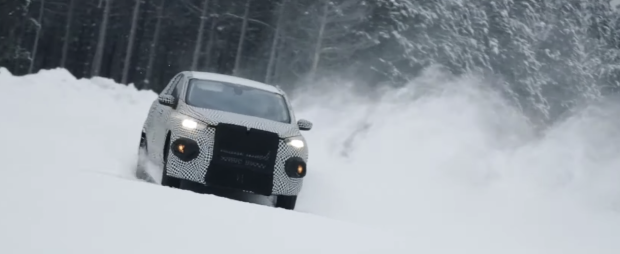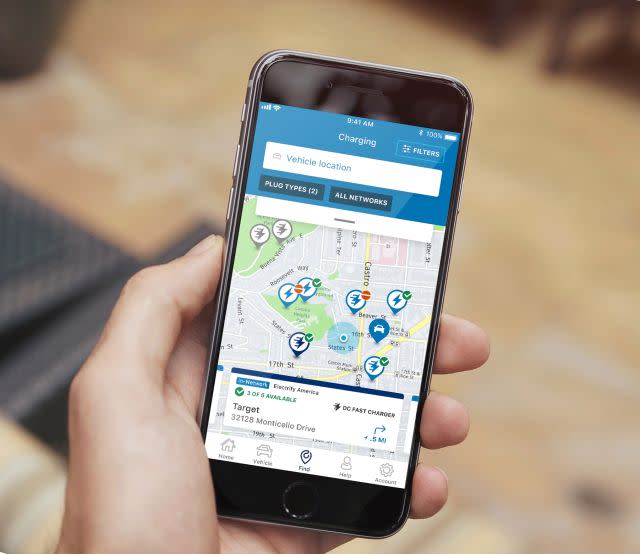Ford drives into the electric-vehicle charging wars

Ford announced today North America’s largest electric-vehicle charging network. It still doesn’t offer any electric vehicles. The carmaker’s first, a 370-mile-range SUV inspired by the Mustang, will come next year.
But it’s laying the groundwork now, saying every new EV sold will include access to the third-party FordPass Charging Network, comprising 12,000 stations and nearly three times as many charging plugs—just under half the total in the US, according to the US Department of Energy. The company’s app will let customers schedule charging at home and access charging points from multiple providers along planned routes.
“We’re taking away all that hassle factor,” says Ford spokesperson Emma Bergg. “That’s what we’re doing for our whole electrification plan: a seamless experience, so that jumping from internal combustion engines is not such a big deal.”

FordPass finds a charge.
It’s a direct challenge to Tesla. The pioneering electric-car maker has long promoted its destination and Supercharger network as a key differentiator for its premium vehicles. Despite drivers charging at home 80% of the time, the Tesla network’s national coverage, charging speed, and convenience is a hit with customers and often cited as a competitive advantage to investors. Tesla has 4,845 stations and 16,750 charging outlets in the US, according to the Department of Energy, about a third of which are Superchargers.
Ford, unlike Tesla, did not build its own stations. It partnered with EV charging software firm Greenlots (a subsidiary of Shell), Electrify America (the largest network of EV charging stations in the US), and other third-party networks to provide universal access for customers.
Nor does Ford’s network advertise quite the same wattage yet. The company says users can charge up to 47 miles in 10 minutes with its 150-kilowatt chargers, or nearly fill up during a typical meal on the road. Actual charging speeds will depend on the capabilities of Ford’s planned EV. Partner Electrify America says it’s ready with 350-kW charging stations along highways as soon as the vehicles can accept such high wattage. Tesla’s latest charging technology (not yet widespread) can pump 250kW into each car, translating into 75 miles of charge in five minutes, or up to 1,000 miles per hour.
Robust charging networks have proven to be a major prize in EV wars being fought on all fronts. In May, GM announced plans to build a US network with construction firm Bechtel. Ford’s manner of entry suggests basic charging-network access will become a commodity open to anyone willing to pay partners.
Sign up for the Quartz Daily Brief, our free daily newsletter with the world’s most important and interesting news.
More stories from Quartz:

